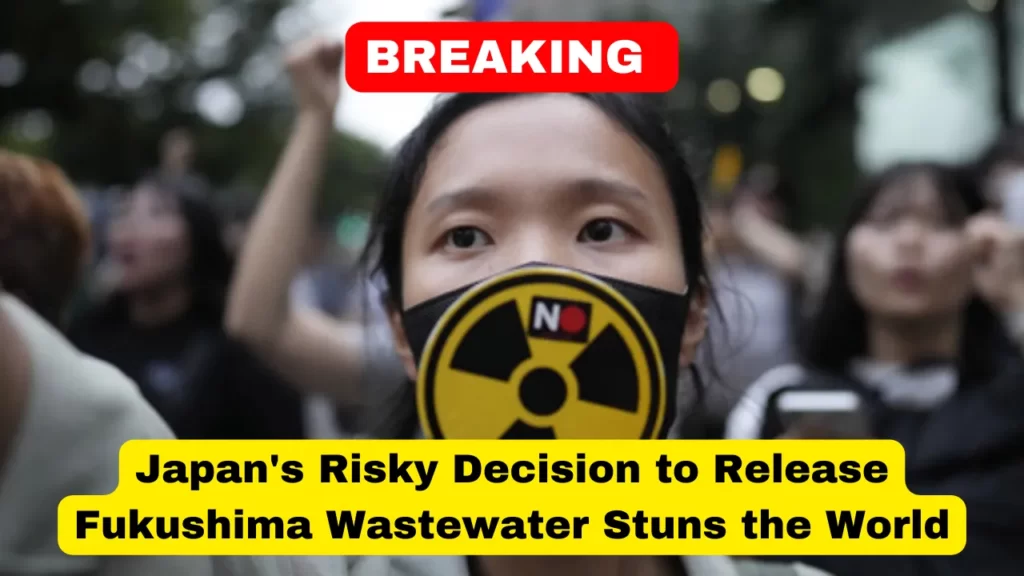In a move met with resistance both domestically and internationally, Japan has commenced the controlled discharge of treated radioactive wastewater from the wrecked Fukushima nuclear plant into the Pacific Ocean. The gradual release of an estimated 1.3 million metric tons of wastewater from the Fukushima Daiichi nuclear power plant began around 1 p.m. local time on Thursday, according to the Tokyo Electric Power Company (Tepco), the plant’s operator.

The decision, sanctioned by the Japanese government and endorsed by the International Atomic Energy Agency (IAEA), has sparked fervent debates, eliciting concerns from environmental activists and certain scientists. However, the IAEA stated in July that the planned release adheres to international safety standards and is projected to yield minimal radiological impact on both human health and the environment.
The core motivation behind this controversial move is to facilitate the process of decommissioning the Fukushima plant, over a decade after a devastating 9.0-magnitude earthquake and ensuing tsunami triggered a catastrophic meltdown. This disaster resulted in one of the most severe nuclear incidents since the Chernobyl disaster in 1986. The vast volume of wastewater, equivalent to the capacity of approximately 500 Olympic-size swimming pools and still accumulating, has been integral to cooling the plant’s nuclear reactors’ fuel rods since the tragic event. Presently, this water is stored in around 1,000 on-site tanks. While it undergoes meticulous filtration and dilution to eliminate the majority of radioactive particles, traces of tritium—an isotope of hydrogen challenging to eliminate—persist.
Authorities assert that the levels of tritium present in the released water will remain well below the safety thresholds established by the World Health Organization. They emphasize that wastewater containing tritium is routinely discharged by nuclear facilities worldwide, sometimes at even higher concentrations.
Notwithstanding assurances from the Japanese government and a visit by Prime Minister Fumio Kishida to underscore the safety protocols, criticisms persist. Japanese fishing communities are concerned about potential repercussions on their livelihoods, while environmental activists and certain scientists voice concerns about the uncertainty surrounding the possible risks. The operator of the Fukushima plant, Tepco, has also faced allegations of inadequate transparency, although it has committed to prioritizing safety and expressed apologies for raising public concerns.
Moreover, this issue has triggered political and diplomatic tensions, especially with nations that have historically strained relations with Japan. China, a major importer of Japanese seafood, has vociferously criticized the release. Wang Wenbin, a spokesperson for China’s foreign ministry, condemned the move, asserting that Japan is shifting the burden of nuclear pollution to its neighboring countries and disregarding the well-being of the region’s inhabitants and the global community.
China has prolonged a longstanding ban on seafood imports from multiple Japanese prefectures, including Fukushima and Tokyo. Similar measures have been implemented in Hong Kong, which ranks as the second-largest market for Japanese seafood after mainland China. Hong Kong’s leader, John Lee, condemned the water release, characterizing it as an “irresponsible act” that jeopardizes food safety and the marine ecosystem.
Despite assertions of vigilant monitoring and stringent safety measures by Japan and the IAEA, apprehensions and opposition persist, particularly in countries like South Korea. Although the South Korean government maintains that there are no scientific concerns regarding Japan’s plans, public anxiety remains considerable, leading to protests and public discourse.
Amidst the contentious debates, experts highlight the thorough and systematic approach undertaken in this process. Marina Lorenzini, affiliated with the Belfer Center for Science and International Affairs at Harvard Kennedy School of Government, underscores the careful considerations and global uniformity characterizing such releases in the nuclear energy sector. The proactive involvement of the IAEA lends a reassuring element to the procedure.
As the release unfolds, the IAEA will maintain a direct presence at the Fukushima plant, providing real-time monitoring data to ensure transparency and accountability. In the midst of ongoing controversies, experts and officials are working to strike a delicate balance between safety, environmental preservation, and international relationships throughout this intricate process.








